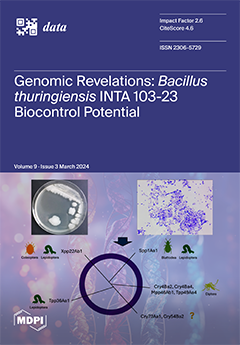Open AccessData Descriptor
A Dataset of Benthic Species from Mesophotic Bioconstructions on the Apulian Coast (Southeastern Italy, Mediterranean Sea)
by
Maria Mercurio, Guadalupe Giménez, Giorgio Bavestrello, Frine Cardone, Giuseppe Corriero, Jacopo Giampaoletti, Maria Flavia Gravina, Cataldo Pierri, Caterina Longo, Adriana Giangrande and Carlotta Nonnis Marzano
Viewed by 1037
Abstract
Marine bioconstructions are complex habitats that represent a hotspot of biodiversity. Among Mediterranean bioconstructions, those thriving on mesophotic bottoms on southeastern Italian coasts are of particular interest due to their horizontal and vertical extension. In general, the communities that develop in the Mediterranean
[...] Read more.
Marine bioconstructions are complex habitats that represent a hotspot of biodiversity. Among Mediterranean bioconstructions, those thriving on mesophotic bottoms on southeastern Italian coasts are of particular interest due to their horizontal and vertical extension. In general, the communities that develop in the Mediterranean twilight zone encompassed within the first 30 m of depth are better known, while relatively few data are available on those at greater depths. By further investigating the diversity and structure of mesophotic bioconstructions in the southern Adriatic, we can improve our understanding of Mediterranean biodiversity while developing effective conservation strategies to preserve these habitats of particular interest. The dataset reported here comprises records of benthic marine taxa from algae and invertebrate mesophotic bioconstructions investigated at six sites along the southern Adriatic coast of Italy, at depths between approximately 25 and 65 m. The dataset contains a total of 1718 records, covering 11 phyla and 648 benthic taxa, of which 580 were recognized at the species level. These data could provide a reference point for further investigations with descriptive or management purposes, including the possible assessment of mesophotic bioconstructions as refuges for shallow-water species.
Full article
►▼
Show Figures





